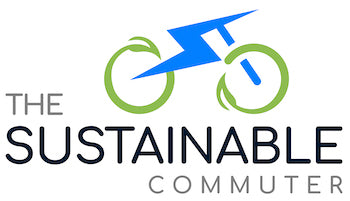
Public Transportation Funding: Ensuring Effective and Sustainable Systems
Share
Introduction
Public transportation plays a crucial role in the development and sustainability of cities worldwide. It provides an affordable and efficient mode of transportation for millions of people every day. However, ensuring the effective and sustainable operation of public transportation systems requires adequate funding. In this blog post, we will explore the various sources of public transportation funding, the social and economic benefits it brings, the challenges in securing funding, and strategies to make funding sustainable.
Sources of Public Transportation Funding
-
Government Funding:
- Governments at various levels (federal, state, and local) contribute a significant amount of funding to public transportation systems.
- These funds are often allocated from taxes, such as fuel taxes, sales taxes, and property taxes.
- Governments also provide grants and subsidies to support the operation and expansion of public transportation.
-
Fare Revenues:
- Fare revenues are another essential source of funding for public transportation systems.
- Passengers pay fares to use various modes of public transportation, including buses, trains, trams, and ferries.
- The fare revenues collected are used to cover operational costs, maintenance, and infrastructure development.
-
Public-Private Partnerships (PPPs):
- Public-Private Partnerships have emerged as a popular funding mechanism for public transportation projects.
- Private companies invest in public transportation infrastructure in exchange for a share of the revenue or other benefits.
- PPPs can provide additional funding and expertise, leading to more efficient and innovative public transportation systems.
Social and Economic Benefits of Public Transportation Funding
-
Improved Mobility:
- Public transportation connects people to jobs, schools, healthcare, and other essential services.
- It provides mobility options for those without access to private vehicles, including low-income individuals, seniors, and people with disabilities.
- Improved mobility enhances social inclusion and reduces transportation-related inequalities.
-
Reduced Traffic Congestion:
- Public transportation helps reduce traffic congestion by providing an alternative to private vehicles.
- A well-funded and efficient public transportation system encourages people to switch from cars to buses, trains, or trams, leading to reduced traffic congestion on roads.
- Reduced congestion improves travel times, enhances productivity, and reduces fuel consumption and emissions.
-
Improved Air Quality:
- Public transportation reduces the number of private vehicles on the road, leading to improved air quality.
- By encouraging people to use public transportation instead of driving, emissions of greenhouse gases and air pollutants are reduced.
- Improved air quality has significant health benefits, reducing the risk of respiratory diseases and improving overall public health.
Challenges of Securing Public Transportation Funding
-
Limited Availability of Public Funds:
- Public transportation funding often competes with other priorities, such as education, healthcare, and infrastructure development.
- Limited public funds can restrict the expansion and improvement of public transportation systems.
- Governments need to prioritize and allocate sufficient funds to ensure the sustainability of public transportation.
-
Political Will:
- Securing public transportation funding requires political will and support from policymakers.
- Political considerations, competing interests, and short-term thinking can hinder the allocation of adequate funds.
- Advocacy and public support are essential in creating a political environment conducive to adequate funding for public transportation.
-
Public Awareness and Support:
- Public transportation funding relies on public awareness and support.
- Lack of understanding about the benefits of public transportation and its funding needs can lead to reduced public support.
- Educating the public about the importance of public transportation and its positive impact on communities is crucial for securing funding.
Strategies for Making Public Transportation Funding Sustainable
-
Diversification of Funding Sources:
- To ensure sustainable funding, public transportation agencies should diversify their funding sources.
- Relying solely on government funding or fare revenues may not be sufficient.
- Exploring alternative sources such as advertising revenues, parking fees, and value capture mechanisms can supplement traditional funding sources.
-
Dedicated Funding Mechanisms:
- Establishing dedicated funding mechanisms can provide a stable and reliable source of funding for public transportation.
- Examples include dedicated sales taxes or special levies specifically earmarked for public transportation.
- These mechanisms provide a predictable funding stream, allowing for long-term planning and investment in public transportation.
-
Innovative Financing Strategies:
- Public transportation agencies can explore innovative financing strategies to supplement traditional funding sources.
- This may include leveraging private investments through PPPs, issuing bonds, or implementing congestion pricing schemes.
- These strategies can unlock additional funding while promoting efficiency and sustainability in public transportation systems.
Example: Uber and Public Transportation
-
Overview of Uber's Public Transportation Initiatives:
- Uber, a leading ride-sharing company, has started expanding its services to include public transportation options.
- In some cities, Uber offers integrated ticketing and planning that allows users to book public transportation rides through the Uber app.
- This initiative aims to provide users with a seamless and convenient multimodal transportation experience.
-
Uber's Impact on Public Transportation Funding:
- Uber's entry into the public transportation sector can have both positive and negative impacts on funding.
- On one hand, Uber's integration with public transportation can increase ridership and fare revenues.
- On the other hand, it may divert passengers away from traditional public transportation modes, leading to reduced fare revenues.
- Public transportation agencies need to collaborate with companies like Uber to ensure that their initiatives contribute to the sustainability of the overall system.
Conclusion: Investing in Public Transportation
Public transportation funding is essential for the effective and sustainable operation of transportation systems. Adequate funding ensures improved mobility, reduced traffic congestion, and improved air quality. However, securing funding for public transportation can be challenging due to limited availability of public funds, political will, and public awareness. To make funding sustainable, diversification of funding sources, dedicated funding mechanisms, and innovative financing strategies are crucial. Public transportation agencies should also collaborate with companies like Uber to leverage their expertise and resources. By investing in public transportation, we can create more inclusive, efficient, and sustainable cities for everyone.
References:
- "Public Transportation Funding and Financing: Opportunities, Challenges, and Strategies" - Transportation Research Board
- "Funding and Financing Public Transportation Systems" - American Public Transportation Association
- "Public Transportation Funding and Financing" - U.S. Department of Transportation
